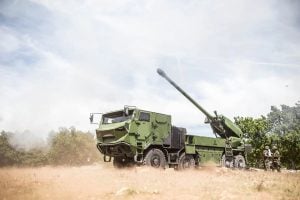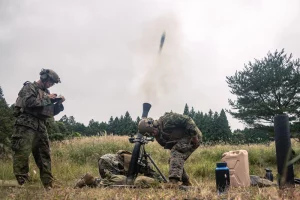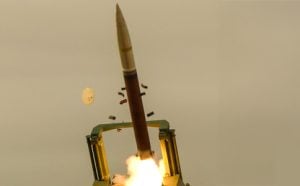Tensions escalated as the Pakistan Army fired at Indian positions in the Krishna Ghati (KG) sector of Poonch, violating the ceasefire agreement. The Indian Army responded with a measured yet decisive retaliation. An official spokesperson confirmed that Pakistani troops also attempted an infiltration but were repelled.
Pakistani Troops Intruded Across LoC, Violated Ceasefire
Why In News
- Tensions escalated as the Pakistan Army fired at Indian positions in the Krishna Ghati (KG) sector of Poonch, violating the ceasefire agreement. The Indian Army responded with a measured yet decisive retaliation. An official spokesperson confirmed that Pakistani troops also attempted an infiltration but were repelled.
What Happened
- Nangi Tekri Battalion, under the Krishna Ghati Brigade, led the response. “On 01 Apr 25, a mine blast occurred in Krishna Ghati Sector due to Pakistan Army intrusion across LC. This was followed by unprovoked firing and ceasefire violation by Pakistan Army. Own troops responded effectively in a controlled and calibrated manner. Situation is under control and being closely monitored,” an Indian Army spokesperson stated.
Pakistan’s Infiltration Attempt Foiled
- According to sources, four to five infiltrators from Pakistan were reportedly killed during the exchange of fire, though official confirmation is awaited. The Indian Army stated there were no casualties or damage on its side. Gunfire continued intermittently throughout the day as Indian forces remained fully deployed in the Krishna Ghati area.
- This is not the first such incident this year. In February, Pakistani forces attempted a similar intrusion in the Krishna Ghati sector but suffered losses. The Indian Army has since maintained a heightened alert along the LoC.
Search Operations in Kathua Intensify
- Meanwhile, security forces have launched a large-scale search–and-destroy operation in Kathua’s Panjtirthi area. The operation, led by the Indian Army, Jammu and Kashmir Police, and Central Reserve Police Force (CRPF), was initiated after suspicious movements were detected on the night of March 31.
- “Acting on intelligence inputs, multiple surveillance cum ambushes were deployed in general area Panjtirthi, Kathua by Indian Army, JK Police and CRPF. Suspicious movement was observed on the night of March 31, leading to an exchange of fire. Search and destroy operations launched at first light on April 1. Operations in progress,” the Rising Star Corps of the Indian Army stated on X.
- Forces remain on high alert in the region, with multiple surveillance teams deployed to monitor further developments.
Sharp Rise In LoC Firing Incidents
- Over the last two months, there has been a significant increase in ceasefire violations along the LoC, particularly in the southern Pir Panjal region.
- Reports suggest that Pakistan has engaged in sniping, cross-border firing, and Border Action Team (BAT) operations.
- Sources within the Indian Army indicate that these attempts have been effectively countered at the local level.
- During the first week of February, Pakistani troops initiated small-arms fire and detonated explosives along the LoC. India retaliated strongly, but despite diplomatic engagements, ceasefire violations have persisted.
2021 Ceasefire Agreement In Question
- The renewed surge in cross-border firing raises concerns about the durability of the ceasefire agreement reaffirmed by India and Pakistan in February 2021.
- The pact, signed by the Director Generals of Military Operations (DGMOs) of both countries, was intended to maintain peace along the LoC.
- However, the repeated violations—especially in the Pir Panjal region—suggest that tensions remain unresolved.
- The Indian Army has reiterated the importance of upholding the agreement. “Indian Army reiterates the importance of upholding the tenets of DGsMO understanding of 2021 to maintain peace along the Line of Control,” an official stated.
- As security forces continue to monitor the situation closely, the increasing hostilities along the LoC signal a fragile peace that may require further diplomatic and military measures to sustain stability.
What Are Pakistan’s Border Action Teams
- The Pakistan’s Border Action Teams (BAT) are specialized units designed for cross-border operations to assert control along the LoC.
- Comprising Pakistan’s Special Services Group (SSG) and militants from groups such as Lashkar-e-Toiba, Hizb-ul-Mujahideen, and Jaish-e-Mohammad, these teams conduct raids up to three kilometres into Indian territory. Members receive extensive training from both the Pakistani Army and Air Force.
How Do They Operate
- BAT operations typically involve six to seven Pakistani soldiers and a few militants who conduct systematic reconnaissance of vulnerable spots along the 778 km LoC before launching their raids. They are trained in guerrilla tactics, aiming to create disruptions and instil fear.
- Training and Objectives : BAT members undergo eight months of training by the Pakistani Army and an additional four weeks by the Air Force. Their primary objective is to dominate the LoC through disruptive actions, often including barbaric acts such as beheadings.



























